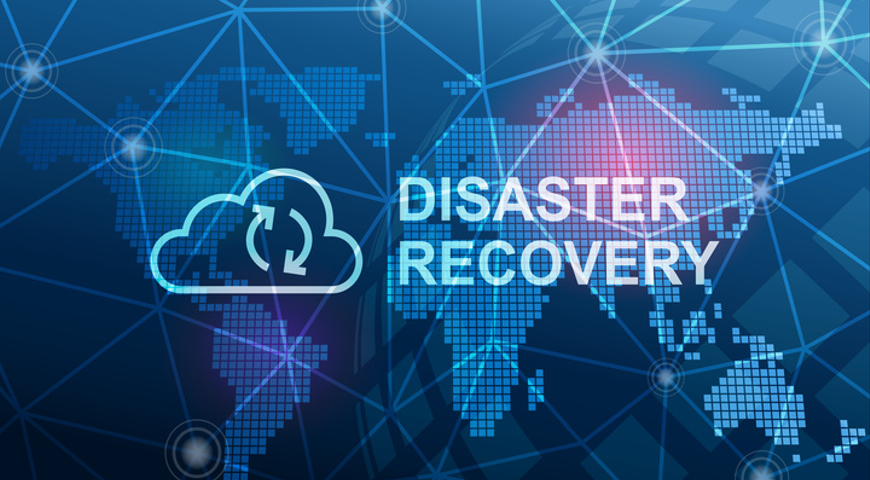
23 Oct The Evolution of Disaster Recovery: Trends and Changes to Watch in 2023 and Beyond
Disaster recovery and business continuity have always been two crucial components of building a stable, reliable, and secure organization. However, as the world has grown more digitized, demand for more efficient tools and solutions in the “DR” landscape has increased.
Companies now have more complex networks to protect, huge volumes of data to preserve, and more privacy and security standards to comply with than ever before. This could be why around 37% of UK companies say their top priority in 2023, was to improve their disaster recovery strategy.
It’s not just UK companies that see the benefits of embracing the right business continuity strategies either. Around 78% of companies say security breaches are the top cause of unexpected downtime, making disaster recovery a priority for businesses of all sizes.
As the IT market continues to evolve, and new threats emerge, disaster recovery technologies are transforming at a consistent pace. Today, we’re looking at some of the biggest trends affecting the marketplace for 2023 and beyond.
Disaster Recovery and Business Continuity Trends in 2023
Disaster Recovery is more than just a strategy for preserving business security and compliance, it’s essential for minimizing unexpected downtime in an organization. This is crucial in a world where 96% of organisations faced at least one incident of downtime between 2019 and 2022.
As companies continue to rely more on their networks, data, and technology systems, the following trends will play a significant role in how teams implement disaster recovery and business continuity plans for the years ahead.
1. The Rise of Disaster Recovery as a Service
Disaster Recovery as a Service, or “DRaaS”, is quickly becoming the go-to solution for cloud-focused businesses interested in boosting business continuity. Around 90% of enterprises use cloud infrastructure for deploying some form of data protection strategy, according to IDC.
Disaster Recovery as a Service solutions provide access to business continuity functionalities through a cloud-based model, allowing organizations to backup and recovery crucial data. Solution providers can offer everything from continuous monitoring and technology management to multi-level backups and AI-driven analytics, all designed to improve a company’s continuity efforts.
What’s more, because DRaaS is delivered over the cloud, it offers more scalability and flexibility than most alternative solutions. At present, this market is growing at a rate of 23.9%, and is forecast to reach a value of $60.4 billion by 2031, demonstrating a new demand for agile security technologies.
2. New Forms of Disaster Recovery Emerge
The rise of the digital landscape and new cybersecurity threats has led to an increased need for broader, more versatile forms of disaster recovery. While comprehensive data protection solutions were once considered cost-prohibitive for smaller businesses, new services have begun to emerge.
Services like “warm site disaster recovery”, for instance, allow SMBs to access critical data and system recovery solutions within a reasonable budget. Many organizations are beginning to offer highly diverse business continuity solutions, combining disaster recovery options with backup tools, and comprehensive monitoring services.
There are cloud solutions available which allow businesses to control their backup, replication, and disaster recovery services through simple online portals, adjusting their coverage and support according to their budget and changing needs. Some solutions even focus on specific ecosystems, such as Azure’s dedicated disaster and site recovery service.
3. Increasing Demand for Automation
In the past, disaster recovery and business continuity plans were often very hands-on and manual processes. Companies used Excel to conduct risk assessments and business impact analysis, and relied on team members to upload files to the cloud and storage systems themselves on a regular basis.
As the amount of data produced by companies has continued to increase, automation in disaster recovery has gone from being a valuable add-on to a necessity. Automation tools for disaster recovery allow companies to create comprehensive workflows which can be executed instantly when a particular scenario occurs.
Many platforms offer advanced features, such as recovery testing capabilities, live disaster simulations, and monitoring tools. Plus, they can frequently integrate with ITSM platforms and other toolkits in the business environment. Through automation, companies can leverage crucial time savings, reduce downtime costs, and heighten productivity, while preserving their budget.
4. AI in Disaster Recovery and Business Continuity
In 2023, Artificial Intelligence and Machine Learning have become increasingly commonplace. AI solutions are now implemented into everything from CCaaS platforms to UC systems, and even business security tools. AI can also have a significant impact on disaster recovery and business continuity in a multitude of ways.
Generative AI tools are becoming incredibly efficient at creating and updating plans for business continuity, with access to vast amounts of market data and insights. AI solutions can also assist with optimizing backup policies, by evaluating business requirements, usage trends, and data patterns.
Depending on the platform chosen by a business, an AI ecosystem can also help with things like:
• Intelligent data deduplication and compression to reduce redundancies
• Predictive analytics to consistently improve backup performance
• Intelligent backup scheduling based on workload patterns and system availability
• Automated disaster recovery orchestration and management
• Intelligent incident detection and response
• Intelligent resource allocation for backup requirements
AI can even help companies respond to disasters faster and more efficiently, making it easier to analyze huge volumes of data and determine the right strategy for mitigating additional problems.
5. Advanced Ransomware Protection and Mitigation
Ransomware attacks have been increasing in size and severity for a couple of years now. Experts predict by the 2023, the cost of ransomware attacks could reach $898.6 million. This is leading to a growing demand for more advanced ransomware protection and mitigation strategies.
In the past, many companies relied on the “3-2-1” rule, requiring multiple copies of data to be stored on different devices. However, organizations are beginning to look into new opportunities to protect against ransomware and system damage.
For instance, immutable storage solutions ensure the integrity and security of backup data by preventing unauthorized modifications and deletion, similar to using blockchain technologies. Using immutable backup storage allows organizations to protect backups of data from new infections, and ensures they can access a reliable source of data in threat scenarios.
Additionally, companies are also looking into other anti-ransomware tools to enhance their disaster recovery campaigns. Endpoint Detection and Response tools, application, and network segmentation options, and SIEM systems are now working more closely together within business continuity plans.
6. New Demands for Regulatory Compliance
Implementing the correct disaster recovery and business continuity plans isn’t just essential for protecting crucial business assets. The right guidelines must be implemented to ensure businesses can adhere to evolving rules about how data is managed, stored, and protected.
In 2023, data compliance trends have continued to evolve, placing more pressure on organizations to secure their data transfer mechanisms, implement privacy by design, and manage data breach notifications. This has led to an increase in companies exploring the benefits of zero trust architecture and zero trust network architecture.
The zero trust cybersecurity approach assumes no implicit trust within a network, requiring authorization and authentication for each access request. It helps to emphasize the importance of continuously verifying users, devices, and applications to mitigate risks.
Zero trust architecture strategies align with various key principles and requirements in regulations like CCPA and GDPR, by implementing strong access controls and identity-based authentication.
7. Green Data Storage
Finally, sustainability has emerged as a major trend in recent years. Not only does it allow companies to appeal to consumers with a focus on protecting the planet, but it can also assist organizations in lowering operational costs, and improving their carbon footprint.
Part of a strong disaster recovery and business continuity strategy is ensuring large amounts of data can be stored in the right environments. Running these data centers typically requires a lot of energy. However, sustainable solutions are emerging to reduce the environmental impact of each company.
Green data storage solutions leverage strategies for energy efficiency, minimizing power consumption and reducing carbon emissions. Using energy-efficient components for hardware, optimizing power management, and leveraging smart cooling systems helps companies to reduce their energy consumption. Additionally, renewable energy integration in data centers is becoming more common.
Wind and solar power are being used to store information in data centers more efficiently. Even lifecycle management and disposal practices are changing with a focus on protecting the planet and its limited resources in the modern world.
The Changing Nature of Disaster Recovery
Disaster recovery and business continuity remains an important part of any company’s strategy for growth, resilience, and compliance in the current world. However, as organizations become more digitized and complex, the strategies we use to prevent and manage disasters are evolving.
Increasingly, intelligent and intuitive tools are becoming essential to ensuring every part of the business ecosystem and its data is properly protected. Following the trends above gives companies an opportunity to not only better protect themselves and minimize downtime, but also to improve their relationships with customers, increase productivity, and reduce costs.
If you need help investing in the right disaster recovery solutions for your business in 2023, check out our comparison matrix for an insight into some of the most reputable vendors on the market. Alternatively, if you’re looking for help with funding your digital transformation, reach out to the UC Advisor team for more information on our powerful transformation grant.



